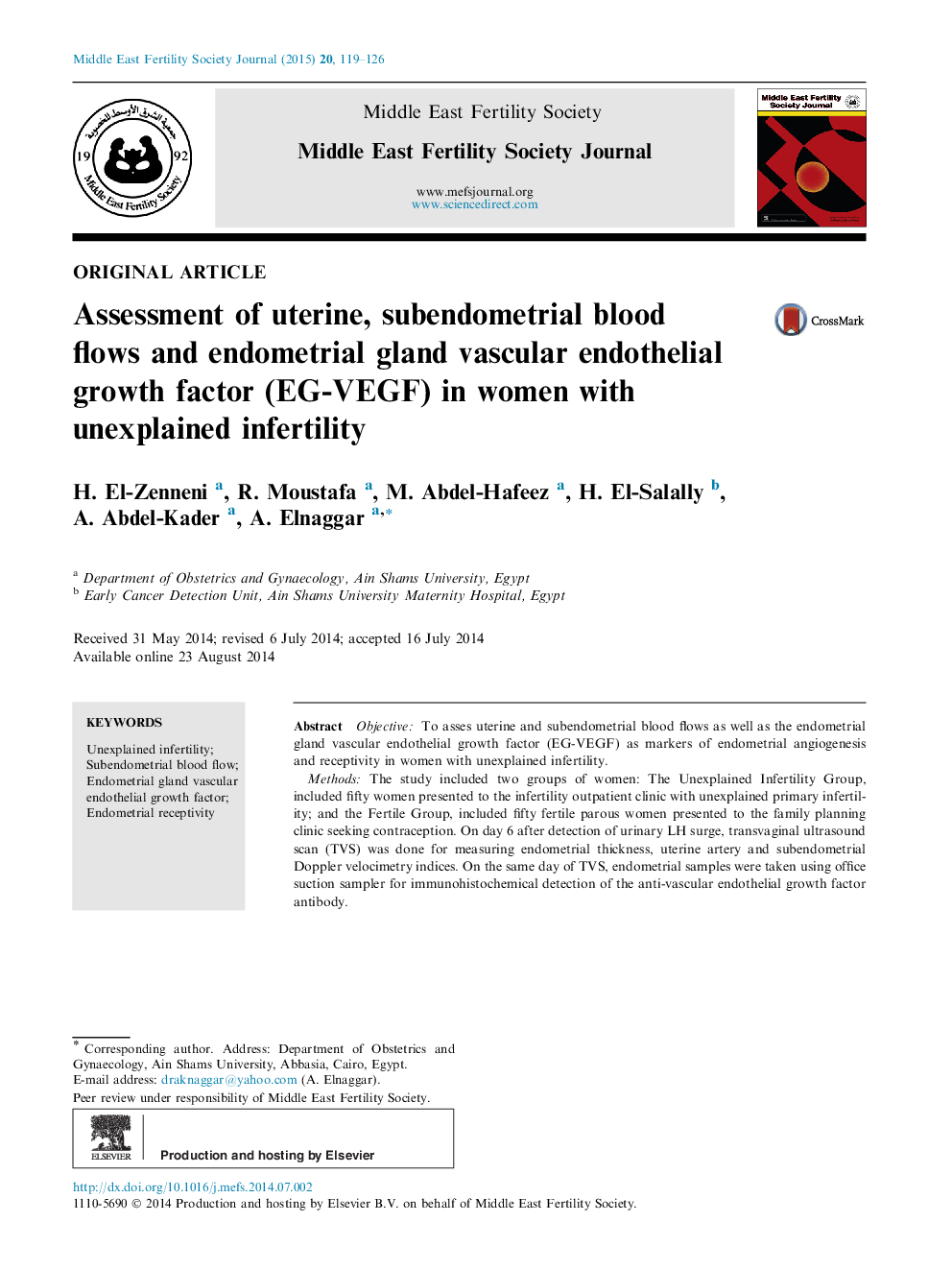| Article ID | Journal | Published Year | Pages | File Type |
|---|---|---|---|---|
| 3966134 | Middle East Fertility Society Journal | 2015 | 8 Pages |
ObjectiveTo asses uterine and subendometrial blood flows as well as the endometrial gland vascular endothelial growth factor (EG-VEGF) as markers of endometrial angiogenesis and receptivity in women with unexplained infertility.MethodsThe study included two groups of women: The Unexplained Infertility Group, included fifty women presented to the infertility outpatient clinic with unexplained primary infertility; and the Fertile Group, included fifty fertile parous women presented to the family planning clinic seeking contraception. On day 6 after detection of urinary LH surge, transvaginal ultrasound scan (TVS) was done for measuring endometrial thickness, uterine artery and subendometrial Doppler velocimetry indices. On the same day of TVS, endometrial samples were taken using office suction sampler for immunohistochemical detection of the anti-vascular endothelial growth factor antibody.ResultsWomen of the Unexplained Infertility Group had lower VEGF score, thinner endometrial thickness, higher subendometrial flow resistance index (RI) and lower subendometrial flow pulsatility index (PI).ConclusionSubendometrial, but not the uterine, blood flow and the EG-VEGF score seem to be significantly lower during the mid-luteal phase in women with unexplained infertility. This may suggest significantly poorer angiogenesis during the assumed peri-implantation period.
